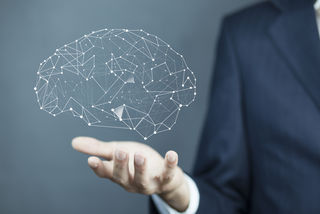Chronic Pain
New Clues That Help Explain Chronic Pain
Why you need pain rehabilitation, based on neuroscience.
Posted January 15, 2020 Reviewed by Gary Drevitch
Where do you turn to for help when your back surgery fails to provide pain relief or improved functioning? Do you elect to undergo more surgery?
From 1998 to 2008, the number of low-back surgeries in the United States increased a staggering 77,682 to 210,407. This, despite outcomes for first-time back surgeries showing only a 50% chance of success; these dismal odds continue to decrease markedly with each additional surgery: Only 30% will be helped by a second surgery, and 15% by a third.
The Brain’s Neuromatrix
Making decisions about health care requires current, reliable information. Yet not all healthcare providers are aware of recent discoveries about how the central nervous system produces pain. For example, many physicians still operate under the assumption that low back pain is primarily caused by the peripheral nerves in that region of the body. This assumption has led to treatments that focus solely on the nerves—such as burning or severing them—or on surgeries designed to relieve pressure.
The most recent neuroscientific theories suggest that the central nervous system creates a “neuromatrix,” composed of cognitive, motor, sensory, behavioral, and emotional information—kind of like a complex, interactive “map” in the brain. This neuronal map then analyzes the multichannel sensory information coming in from 43 miles of peripheral nerves in order to gauge whether a threat is present. If so, pain will be produced.

In other words, the brain only produces pain when it believes we need protection.
Under this theory, pain is not produced by our peripheral nerves, but rather by the brain when the information generated from the nerves tell it that something has changed. For example, it tells us we have skin damage from a cut, but not that the cut hurts.
The key question we need to ask ourselves when we have chronic pain is whether or not our brain’s neuromatrix is analyzing reliable and accurate information. Just like a doctor choosing to operate as a last resort because he’s run out of other options, what if the brain concludes a threat is present—based on faulty or incomplete information—when really there is little or no threat at all?
How the Brain Creates Pain
Picture this: 12-year-old me, riding my Schwinn banana-seat bike home from a friend’s house. Per usual, I was biking as fast as I could down my street before turning into our driveway. On this particular occasion, I realized too late that there was no way I was going to avoid smashing into the garage door.
In an effort to stop my forward momentum, I went from sitting upright on my bike to leaning at a 45-degree angle as I slid forward, braking as hard as I could. Out of the corner of my eye, I could see that the ground was quickly approaching the left side of my body. I braced myself to simultaneously hit the ground and the door. But just as I prepared to let go of the bike by reaching for the ground to break my fall I came to a stop—still upright on my bike—inches from the garage door. No harm was done to me, the bike, or the door.
But the story continues.
As I caught my breath, I looked down at my left hand. The hand was not only bright red, it was in burning pain. The palm of my hand felt like I had indeed dragged it across the ground, as if it were embedded with small pieces of rock and debris. I recognized this feeling of “road rash” because I had done this in the past.
Except that this time, my hand had no physical trauma. So, why did I still have the same physical reaction of redness and the same sensation of pain?
The reason is, my brain instantly analyzed the imminent threat. In the fraction of a second that I was braking, my brain prepared my hand to heal by sending extra blood to the area; it also activated a painful alert signifying that my hand was hurt.
But there was a glitch in this amazing response: My brain’s neuromatrix was not operating with complete and accurate information. My brain produced pain and initiated a response, even in the absence of information coming from the peripheral nerves in my hand.
Pain Rehabilitation Based on Neuroscience
We know that rehabilitation for low back pain (and other types of chronic pain) should involve an active and multifaceted approach. Best rehab practices should include safe movement, exercise, stretching, strengthening, and endurance training. But in addition, treatment that addresses how the brain processes information, views pain, handles stress, and manages emotions would be even more comprehensive. To this end, therapy with pain psychologists or physical and occupational therapists trained in pain management would be an invaluable component of the treatment process.
Changing your focus and relationship to pain can be life-altering. It is possible to begin to move, think, and respond differently to your chronic pain. Over time, you may find that you are spending more time living the life you want, instead of waiting for your pain to grant you the permission to do so.
To learn more about advancements in the neuroscience of pain, health care professionals can turn to the Neuro Orthopaedic Institute (NOI) and the International Association for the Study of Pain.




